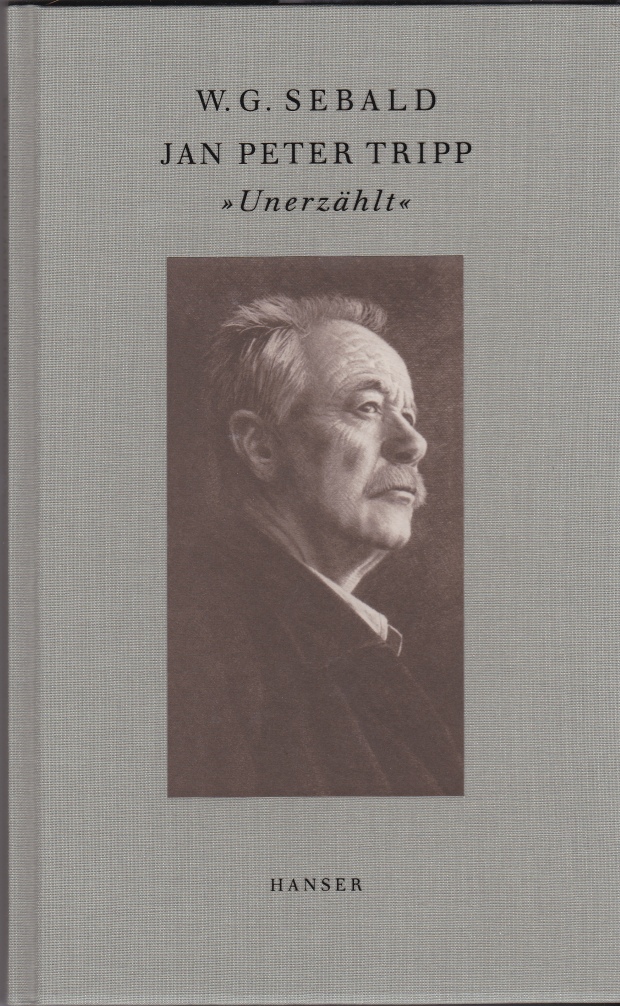Jan Peter Tripp’s Portraits of Sebald
In Heike Polster’s book The Aesthetics of Passage: The Imag(in)ed Experience of Time in Thomas Lehr, W.G. Sebald, and Peter Handke, which I wrote about recently, Polster reproduces a painting that I had never seen before by Sebald’s close friend Jan Peter Tripp, which he created in 2003 as a memorial portrait of Sebald. Titled “L’Oeil oder die weisse Zeit” (“The Eye or the White Time”) the acrylic on canvas painting is divided into five sections, four of which represent Sebald seen from different angles. Looked at sequentially, the four portraits depict Sebald gradually disappearing and a bright light coming into view over his head, while the bottom section represents a mysterious still life comprised of pencil stubs and other objects, some of which appear to be small, polished stones. According to Polster, the painting was made on the second anniversary of Sebald’s death and is currently owned by Sebald’s widow, Ute Sebald.
The reproduction below is more or less how the painting appears in Polster’s book.
Ealier this summer, in an article written for the online celebration of Sebald held at Kosmopolis, Jorge Carrión published high quality reproductions of the four sections of this painting devoted to Sebald’s portrait. One is shown below (all four can be seen at Kosmopolis). The entire painting can be seen in color at an online page of works by Tripp published in Quart Heft für Kultur Tirol (scroll down slightly). In these color reproductions, we can see that the top two images which show side views of Sebald’s face and the still life at the bottom are painted in full color, while the two frontal views of Sebald are monochromatic.
Now, if you scroll further down on the same page at Quart Heft für Kultur Tirol there is another painting I have never seen before. It is two-sided painting on wood from 2010 called “Remember Max” that is a trompe-l’œil image of a black board into which a bent portrait of Sebald has been tucked. Three pencil stubs are held tightly to the blackboard with a rubber band. As Polster noted in closely examining “L’Oeil oder die weisse Zeit,” the sharpened pencil stubs in “Remember Max” appear to have teeth marks on them. One has to guess that Tripps identifies the sharpened but well-used pencil stubs with Sebald, who famously hated modern technology and did not write on a computer. The view of Sebald’s face in the top left section of “L’Oeil oder die weisse Zeit” and the portrait of Sebald shown in “Remember Max” are both very similar to Tripp’s portrait of Sebald that appears in Unerzählt (published in English as Unrecounted), except the image is reversed.
The view of Sebald’s face in the top left section of “L’Oeil oder die weisse Zeit” and the portrait of Sebald shown in “Remember Max” are both very similar to Tripp’s portrait of Sebald that appears in Unerzählt (published in English as Unrecounted), except the image is reversed.




A new book A new author. “End Matter” Katrina Palmer Pub. Artangel/ Book Works
Thanks. Just ordered it.